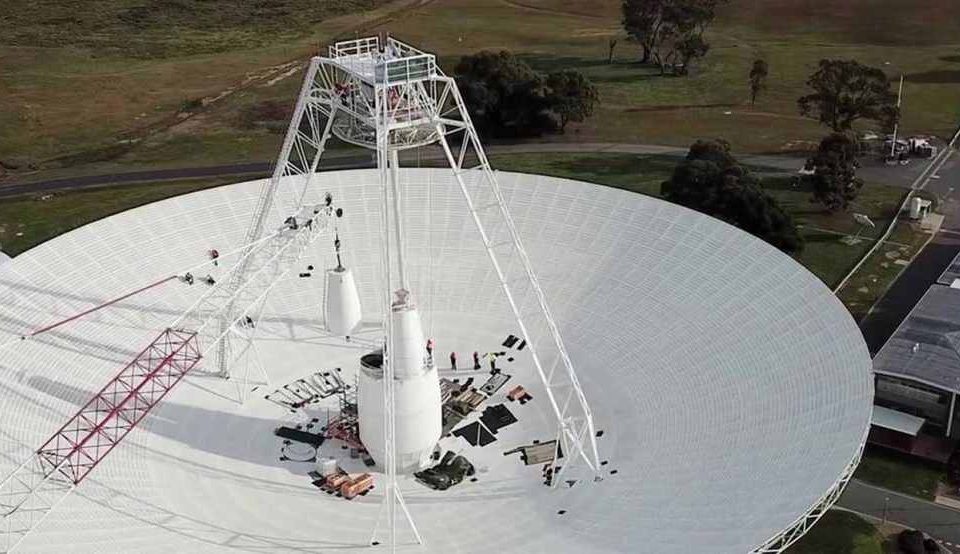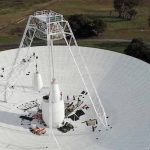After many months of silence, NASA’s Voyager 2 sends message back to Earth from 11.5 billion miles away

We wrote about NASA back in 2018 after the U.S. space agency received a response from Voyager 1 spacecraft that was 13 billion miles away after 37 years of inactivity. The twin space probe, Voyager 2 was launched by NASA 16 days earlier on August 20, 1977. Voyager 1 is NASA’s farthest and fastest spacecraft. It was first launched on September 5, 1977. Having operated for 40 years, 6 months, and 14 days as of March 19, 2018, the spacecraft relies on small devices called thrusters to orient itself so it can communicate with Earth.
Voyager 2, which is 11.5 billion miles away from Earth, was launched to study the outer planets. A part of the Voyager program. In October 2020, astronomers reported a significant unexpected increase in density in the space beyond the Solar System as detected by the Voyager 1 and Voyager 2 space probes.
Voyager 2 is collecting data from the frontiers of our solar system as it speeds through interstellar space, which it reached in November 2018. It carries a message to the cosmos: a golden record featuring music and other sounds from Earth, just like its twin, Voyager 1.
For over 40 years, Voyager 2 spacecraft has been roaming the cosmos all the while staying in touch with a team of engineers in ground control. However, in March 2020, NASA decided to let the spacecraft spend a lonely few months in space in order to upgrade its communication system– the Deep Space Station 43 (DSS43) in Australia. DSS43 is the only radio antenna that could communicate with the Voyager 2 probe. Flying some 11.5 billion miles away from Earth at the edge of interstellar space and gathering data, Voyager 2 was left alone in mid-March when the coronavirus pandemic began.
Then on October 29, NASA reconnected with Voyager 2 after mission operators sent a series of commands to NASA’s Voyager 2 spacecraft for the first time since mid-March. The spacecraft has been flying solo while the 70-meter-wide (230-foot-wide) radio antenna used to talk to it has been offline for repairs and upgrades. Voyager 2 returned a signal confirming it had received the “call” and executed the commands without issue.
The call to Voyager 2 was a test of new hardware recently installed on Deep Space Station 43, the only dish in the world that can send commands to Voyager 2. Located in Canberra, Australia, it is part of NASA’s Deep Space Network (DSN), a collection of radio antennas around the world used primarily to communicate with spacecraft operating beyond the Moon. Since the dish went offline, mission operators have been able to receive health updates and science data from Voyager 2, but they haven’t been able to send commands to the far-flung probe, which has traveled billions of miles from Earth since its 1977 launch.
Among the upgrades to DSS43, as the dish is known, are two new radio transmitters. One of them, which is used to talk with Voyager 2, hasn’t been replaced in over 47 years. Engineers have also upgraded heating and cooling equipment, power supply equipment, and other electronics needed to run the new transmitters.
The successful call to Voyager 2 is just one indication that the dish will be back online in February 2021.
“What makes this task unique is that we’re doing work at all levels of the antenna, from the pedestal at ground level all the way up to the feedcones at the center of the dish that extend above the rim,” said Brad Arnold, the DSN project manager at NASA’s Jet Propulsion Lab in Southern California. “This test communication with Voyager 2 definitely tells us that things are on track with the work we’re doing.”
Forty-one years after it launched into space, NASA’s Voyager 2 probe has exited our solar bubble and entered the region between stars. Its twin, Voyager 1, made this historic crossing in 2012. Edward Stone, the Voyager mission’s project scientist, and Suzanne Dodd, the mission project manager, discuss this major milestone and what’s to come for the trailblazing probe.




